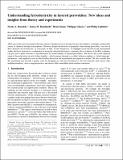Files in this item
Understanding ferroelectricity in layered perovskites : new ideas and insights from theory and experiments
Item metadata
| dc.contributor.author | Benedek, Nicole | |
| dc.contributor.author | Rondinelli, James | |
| dc.contributor.author | Djani, Hania | |
| dc.contributor.author | Lightfoot, Philip | |
| dc.contributor.author | Ghosez, Philippe | |
| dc.date.accessioned | 2016-02-06T00:13:00Z | |
| dc.date.available | 2016-02-06T00:13:00Z | |
| dc.date.issued | 2015-06-21 | |
| dc.identifier | 167164689 | |
| dc.identifier | d493aec3-fe91-4c1a-93b8-c823f6790a65 | |
| dc.identifier | 84930656573 | |
| dc.identifier | 000355701000002 | |
| dc.identifier.citation | Benedek , N , Rondinelli , J , Djani , H , Lightfoot , P & Ghosez , P 2015 , ' Understanding ferroelectricity in layered perovskites : new ideas and insights from theory and experiments ' , Dalton Transactions , vol. 44 , no. 23 , pp. 10543-10558 . https://doi.org/10.1039/C5DT00010F | en |
| dc.identifier.issn | 1477-9226 | |
| dc.identifier.other | ORCID: /0000-0001-7048-3982/work/59464429 | |
| dc.identifier.uri | https://hdl.handle.net/10023/8162 | |
| dc.description | N. A. B. was supported by The Welch Foundation under Grant. No. F-1803. J. M. R. acknowledges support from the Penn State Center for Nanoscience, National Science Foundation grant no. DMR-1420620. Ph.G. acknowledges a research Professorship of the Francqui Foundation and financial supports of the ARC project TheMoTherm and FNRS project HiT4FiT. | en |
| dc.description.abstract | ABO3 perovskites have fascinated solid-state chemists and physicists for decades because they display a seemingly inexhaustible variety of chemical and physical properties. However, despite the diversity of properties found among perovskites, very few of these materials are ferroelectric, or even polar, in bulk. In this Perspective, we highlight recent theoretical and experimental studies that have shown how a combination of non-polar structural distortions, commonly tilts or rotations of the BO6 octahedra, can give rise to polar structures or ferroelectricity in several families of layered perovskites. We discuss the crystal chemical origin of the polarization in each of these families -- which emerges through a so-called `trilinear coupling' or `hybrid improper' mechanism -- and emphasize areas in which further theoretical and experimental investigation is needed. We also consider how this mechanism may provide a generic route for designing not only new ferroelectrics, but also materials with various other multifunctionalities, such as magnetoelectrics and electric field-controllable metal-insulator transitions. | |
| dc.format.extent | 16 | |
| dc.format.extent | 5657302 | |
| dc.language.iso | eng | |
| dc.relation.ispartof | Dalton Transactions | en |
| dc.subject | QD Chemistry | en |
| dc.subject | NDAS | en |
| dc.subject.lcc | QD | en |
| dc.title | Understanding ferroelectricity in layered perovskites : new ideas and insights from theory and experiments | en |
| dc.type | Journal article | en |
| dc.contributor.institution | University of St Andrews. School of Chemistry | en |
| dc.contributor.institution | University of St Andrews. EaSTCHEM | en |
| dc.identifier.doi | 10.1039/C5DT00010F | |
| dc.description.status | Peer reviewed | en |
| dc.date.embargoedUntil | 2016-02-06 |
This item appears in the following Collection(s)
Items in the St Andrews Research Repository are protected by copyright, with all rights reserved, unless otherwise indicated.

